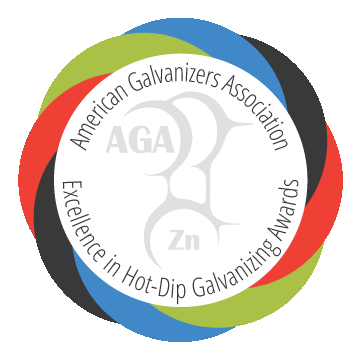Chicago CTA's 95th Street Red Line Terminal
Chicago, IL United States | 2018
 2019
2019
Menu • Quick Links • Search
Part of the “imagineCALGARY” long-range urban sustainability plan launched in 2005 was a proposal to adopt a new rapid transit system to provide key destinations with more functional connections. A Bus Rapid Transit (BRT) system, “MAX,” was identified as an efficient, reliable transit service that cities around the world have adopted. With the adjacent communities in mind, GEC Architecture worked with Stantec engineers to develop a ‘kit of parts’ that allowed the same components to provide for a variety of scales for stations across the city. The Max Transit shelters serve as a prototype for other similar projects in the future.
A great example of integrated architecture and engineering efforts, this project will serve as an example for other jurisdictions in Canada on how to cost-effectively enhance transit while improving the public return. ~Meredith Petrie, Stantec
As a part of the Calgary Transportation plan that guides the growth of the city over a 60-year period, MAX’s design has a significant impact on the community as it determines how people move from one point to another. It can either enhance or diminish its surroundings - therefore the key goal was a sustainable project that compliments adjacent neighborhoods and supports the local economy. Overall, the purpose of the MAX project was to create fewer stops, making the transit system faster and more convenient to get from one part of the city to another.
Two key principles from the Calgary Transportation Plan are to utilize green infrastructure and provide safe, effective, affordable and efficient transportation services to ensure accessibility to all areas of the city. The “kit of parts” developed by GEC Architecture and Stantec Consulting Ltd (Stantec) took both of these principles in mind. The systems were designed to fit a variety of needs throughout the city from a residential community to an industrial sector. A prototype was produced to articulate generic sizes that could be configured into a a 1.5m, 2.0m or 4.0m wide shelter. This approach allows the shelters to maintain the same architecture in a cost-effective way as they are adapted to suit each location’s needs.
The two key components of sustainability and affordability are addressed by using hot-dip galvanized steel on the shelters. Steel is a sustainable material because it can be infinitely recycled, so the investment in making steel is never wasted and can be employed by future generations. Using hot-dip galvanizing as the protection system for steel provides a maintenance free coating that extends the life of the structure with minimal environmental impact. Both zinc and steel are natural, abundant and 100% recyclable, providing the City of Calgary with the sustainable and affordable solution they sought.
GEC designed the canopy frame with a “folded-plate-like” profile. They wanted the size of the members to be as small as possible so as much of the sustainable cross-laminated timber (CLT) ceiling/roof deck material would be visible. To accomplish this, Stantec and the steel fabricator designed welded knuckle plate connections at intersections. Initially the configuration caused cleaning solutions and zinc to pool at one corner and leave a bare spot visible at the other after galvanizing. Working together, it took a couple of samples to find the ideal hole placement and cropping to ensure full coverage.
This project needed to be completed on budget and with minimal disruption as it affected access to surrounding communities and businesses. Using hot-dip galvanized steel allowed for erection to be completed much faster due to the durability of the coating. HDG’s durability would not only avoid touch-up requirements during construction, but also prevent regular maintenance to the shelters after being exposed to Calgary’s harsh winters. By eliminating costly and time-consuming maintenance also lowers the life-cycle cost, improving the overall affordability of the project.
Calgary's BRT Network is the result of many years of planning and public engagement that started in 2007. In September 2015, the funding was received through the Province of Alberta's GreenTRIP program, which focuses on improving sustainable pubic transit to reduce traffic congestion and greenhouse gas emissions. Decisions made today about where and what to build affect everyone, just as decisions of the past affect us today. Galvanizing the MAX transit shelters allows for maintenance-free, low-budget construction that will last a lifetime.
Newly Complete
Transportation
Industrial/Urban
Calgary, AB Canada
Aesthetics, Coating Durability, Corrosion Performance, Initial Cost, Life-Cycle Cost, Prior HDG Experience, Sustainability
All transit shelters and light supports were galvanized.
Steel: 344
HDG: 344
Gary Mundy
GEC Architecture
Brian Breukelman
Stantec
Howard Kai
City of Calgary
Wayne Hatcher
Metal-Fab Industries Ltd.
AZZ Galvanizing - Edmonton
Thank you! Your vote has been accepted.